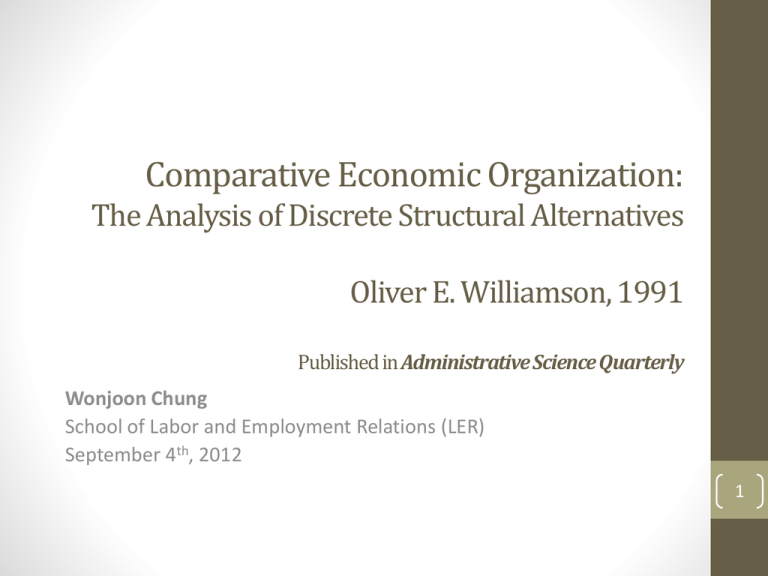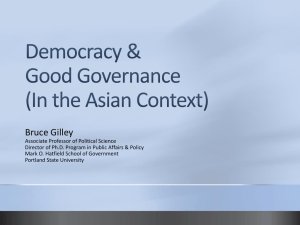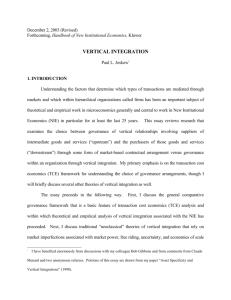Administrative Science Quarterly Wonjoon Chung
advertisement

Comparative Economic Organization: The Analysis of Discrete Structural Alternatives Oliver E. Williamson, 1991 Published in Administrative Science Quarterly Wonjoon Chung School of Labor and Employment Relations (LER) September 4th, 2012 1 About Oliver E. Williamson… • American economist • Professor at University of California, Berkeley • Nobel Memorial Prize in Economic Science (2009) • Transaction cost economics theory • http://groups.haas.berkeley.edu/bpp/oew/ 2 Research Purpose • To identify and explicate the key differences that distinguish three generic forms of economic organization: market, hybrid, and hierarchy • To unify two disjunctive areas of institutional economics: the institutional environment and the institutions of governance 3 Discrete Structural Analysis • Factors that support discrete structural analysis in the paper 1. Firms are not extension of markets but employ different means 2. Discrete contract law differences support and define each form 3. Marginal analysis is concerned with second order effects – economizing (via discrete structural governance) is first order • Contract Law 1. Classic contract law (Williamson, 1979, 1985) 2. Neoclassical contract law Neoclassical contract law is characterized by the excuse doctrine and forbearance (hierarchy) 4 Discrete Structural Analysis • The underlying rationale for forbearance law 1. parties have deep knowledge of dispute and efficient solutions (it would be costly to communicate them, and they may not be verifiable outside the organization) 2. Permitting internal disputes in courts would undermine the nature of the firm. • First-Order Economizing Effective adaptation and elimination of waste Allocative efficiency → Neglect of organizational efficiency 5 Dimensionalizing Governance • The discriminating alignment hypothesis • Transactions (which differ in their content) are aligned with governance structures (which differ in their costs and competencies). • Adaptability and incentive/control instruments are key. 6 Discriminating Alignment • Asset specificity • the degree to which an asset can [not] be redeployed to alternative uses and by alternative users without sacrifice of productive value • Alignment • Plot the governance costs as a function of the asset specificity (Ignoring the revenue and production-cost consequences of specificity) 7 Comparative Statistics • To consider how equilibrium distributions of transactions will change in response to disturbances in the institutional environment • Choices are discrete [Comparative statistics] • Property rights • Governmental expropriation • Leakage • Contract law • Uncertainty (Figure 3) 8 Conclusion • The economic problem of society is described: adaption, autonomous and coordinated kinds • Each generic form of governance is shown to rest on a distinctive form of contract law • Hybrid form of organization has own disciplined rationale • The logic of each generic form of governance: dimensionalization and explication of governance • The institutional environment and the institutions of governance: Parameter shifts 9









